PHOTOGRAPHY IN A FINE ART ENVIRONMENT
Landscape photographer of the year 2022 - in picture. The latest news and comment on the Landscape photographer of the year award from The Guardian. Film | Books | Art & Design | TV & Radio | Stage | Classical | Games.
Skilled at Life. Hobbies help you become more patient, taking up photography as a hobby can bring a lot of joy to your life and photography is a truly fulfilling hobby. You don’t have to be an expert to enjoy photography as a hobby. But if you want to improve your skills, there’s always more to learn, and here are some of my photography favourite Links. A community where professional PHOTOGRAPHER & ARTIST peers showcase interesting works and creative concepts that will help you improve your photography skill and see how many new tricks you can discover. Age is not a barrier to learning a new hobby and you can start with the camera on your phone if that's what you have available. Documentary Photographer versus Photojournalist, and the differences.
Documentary Photographer. Documentary photography usually refers to a popular form of photography used to chronicle events or environments both significant and relevant to history and historical events as well as everyday life. Documentary photographer often consider a magazine/book layout or a specific picture when working. What important to a documentary photographer is a single strong individual photo/image. Because the images are single image, they will need to support the stories the photographer is about to write. They are not linking images; every standalone image has its own purpose and does need not the other pictures to support it, to tell a story.
What does it take to become a documentary photographer? Documentary photography is usually referring to art which captures a real moment, conveying a message about the world. A good documentary photographer will always have his/her camera ready. Be open to life, be able to take a good documentary photograph, be able to unfold what you see in front of you and will often include a sense of place.
SPONSORED CONTENT
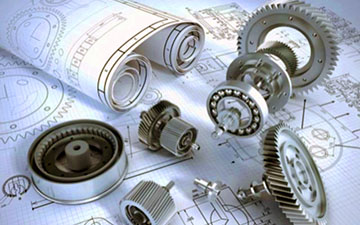
Your Service Flyer
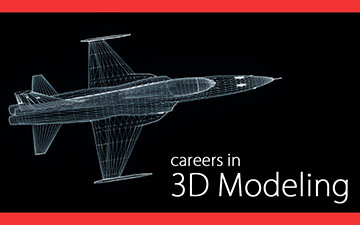
Your Event Invitation

Your Promotion Ads
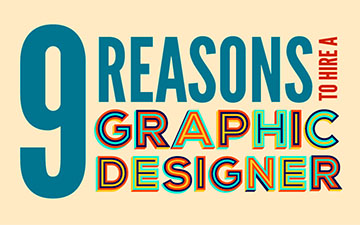
Your Logo & Brand
Support us and grow your business with us. My goal was to make technical information available with ready access to commonly needed resources, formulas, and reference materials while performing my work as a Technical Support Engineer. The businesses listed in the Sponsored Content section were randomly selected because of their uniqueness. However, non-sponsored selected ads will be rotated monthly.
Viba Direct lacks an advisory board to do research and hire writers with the latest technological knowledge. Creating an effective advisory board requires more than an invitation. Without your sponsorship, this is not possible. If your company is interested in placing the company's logo, brand, event invitation, and other promotional banners and flyers here or on any other pages. Please Customer Service for more detail.
Photojournalist. A document photographer and a photojournalist are very much the same. But most photojournalist earn a degree in journalism, communications, or photography. They can work as freelance photographers, or can be employed by photo agencies, magazines, televisions or local newspaper. Photojournalism images are just focused on the short-term audience involvement, whereas documentary photography images are stored for the long-term study. Photojournalists also work with video shooting and editing to help tell the stories. Writing is a big part of photojournalism because images are published in the newspapers, TV, etc. Therefore, each photo needs a caption to tell story.
What does it take to become a photojournalism? The main objective of photojournalism is to tell a story better than the text or write-up that usually accompanies the photos. It’s not as easy as a documentary photographer. A photojournalist relies only on images to tell a narrative story. They battle through dangerous war zones, crowded political scrums and insulated communities. Every story is a different challenge that requires an expert photographer with grit, gusto and patience. The most important thing is to practice taking pictures that tell a story. A successful photojournalist must possess the abilities, such as: persistence, speed, flexibility, resourcefulness, handle stress and deadline pressure.
FINE-ART PHOTOGRAPHY
Fine-art photography is photography created in line with the vision of the photographer as an artist, using photography as a medium for creative expression. The goal of fine-art photography is to express an idea, a message, or an emotion. Fine art photography is photography focused on the aesthetic, beauty, and meaning. Nhiếp ảnh mỹ thuật là nhiếp ảnh được tạo ra phù hợp với tầm nhìn của người chụp với tư cách là một nghệ nhân, sử dụng nhiếp ảnh như một phương tiện để thể hiện sáng tạo. Nhiếp ảnh mỹ thuật là nhiếp ảnh tập trung vào thẩm mỹ, vẻ đẹp và ý nghĩa.
Fine art photography often revolves around the photographer/artist themselves. Exploring how the photographer sees a scene and how they are able to capture a composition based on how they view the world. This will allow the artist to think outside the box and look at approaching his/her photoshoot from a different perspective. Where will the setting be? Who will be the subject? Angle of view and what time of day? All of these questions and more will need to be answered in order to prepare for the photoshoot. Nhiếp ảnh mỹ thuật thường xoay quanh bản thân người chụp / nghệ nhân. Tìm hiểu cách nhiếp ảnh gia nhìn cảnh và cách họ có thể chụp bố cục dựa trên cách họ nhìn vũ trụ. Điều này sẽ giúp nhiếp ảnh gia suy nghĩ khác biệt và nhìn vào việc tiếp cận buổi chụp ảnh của anh ấy / cô ấy từ một góc độ khác. Khung cảnh sẽ ở đâu? Ai sẽ là chủ thể? Góc nhìn và thời gian nào trong ngày? Tất cả những câu hỏi này và nhiều câu hỏi khác sẽ cần được trả lời để chuẩn bị cho buổi chụp hình.
Fine-art photography includes:
• — Fine-art architectural photography presents the buildings that surround us in a beautiful, harmonious and often surprising way. Fine-art architectural photography means presenting an object in a way that focuses primarily or solely on its imaginative, aesthetic, or intellectual side. It’s a method of processing that uses techniques similar to the techniques used when drawing in Black and White. Architecture means first and foremost geometry, so that when we create an architectural photograph we are working with lines, shapes, we are dealing with volumes, intersections, and with the nuances of light interacting with these volumes. We are working with space and depth. Working with architectural subjects has its own rules: the rules of geometry and of three-dimensional representation. Knowing and respecting these rules is going to give us much better results when creating fine art architectural photographs or any kind of architectural photographs. Nhiếp ảnh mỹ thuật kiến trúc trình bày các tòa nhà bao quanh chúng ta một cách đẹp đẽ, hài hòa và thường gây ngạc nhiên. Chủ yếu chụp ảnh mỹ thuật kiến trúc có nghĩa là diễn tả một mục tiêu bằng cách làm nổi bật hẳn lên, hoặc chỉ tưởng tượng vào hình ảnh với khía cạnh độc nhất, thẩm mỹ hoặc công trình người sáng tạo ra nó. Đây là một cách chụp ảnh sử dụng các kỹ thuật tương tự như các kỹ thuật được sử dụng khi vẽ Trắng Đen. Đầu tiên kiến trúc có nghĩa là hình học, vì vậy khi chúng ta tạo ra một bức ảnh nghệ thuật xây dựng, chúng ta dùng các đường nét, hình dạng, chúng ta xem xét khối lượng, giao điểm và các tác động sắc thái của ánh sáng với các điểm này. Chúng ta đang làm việc với không gian và chiều sâu. Chụp ảnh với các công trình kiến trúc có các quy tắc riêng của nó: quy tắc hình học và sự hình dung ba chiều. Biết và tôn trọng những quy tắc này sẽ mang lại cho chúng ta nhiều kết quả tốt hơn khi chụp các bức ảnh mỹ thuật kiến trúc hoặc bất kỳ loại ảnh kiến trúc nào.
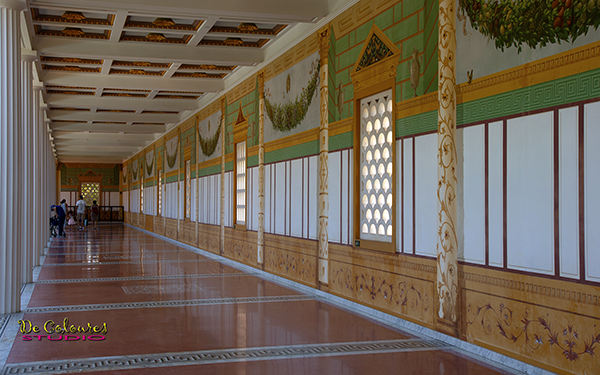 |
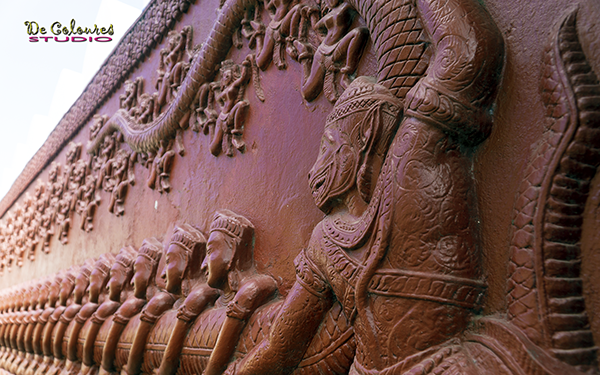 |
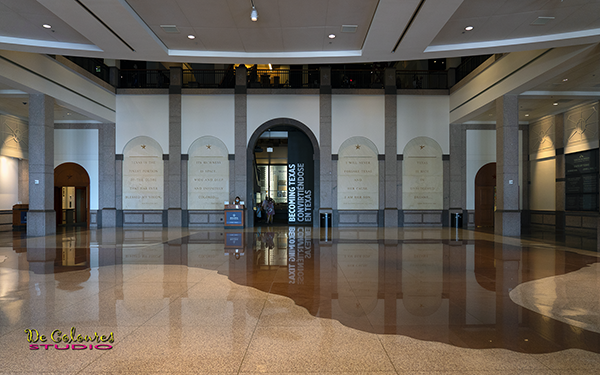 |
• — Fine-art conceptual photography is a type of photography that illustrates an idea. Conceptual photography is about work that starts with a concept or an idea. In many instances, photography normally starts with an image or a place that seems unreal. It’s all about imagination and ideas. That’s how its starts. Chụp ảnh mỹ thuật hình dung là loại ảnh minh họa cho một ý tưởng. Chụp ảnh bắt đầu qua cách hình dung khái niệm hoặc một ý tưởng khái quát. Trong nhiều trường hợp, nhiếp ảnh thường bắt đầu với một hình ảnh hoặc một địa điểm có vẻ không thực. Tất cả là trí tưởng tượng và ý tưởng. Cách chụp ảnh mỹ thuật hình dung bắt đầu từ đó.
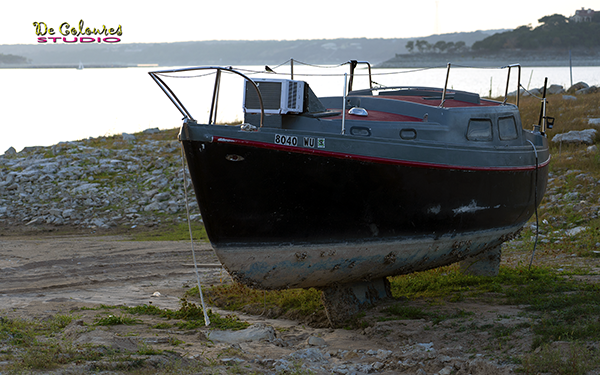 |
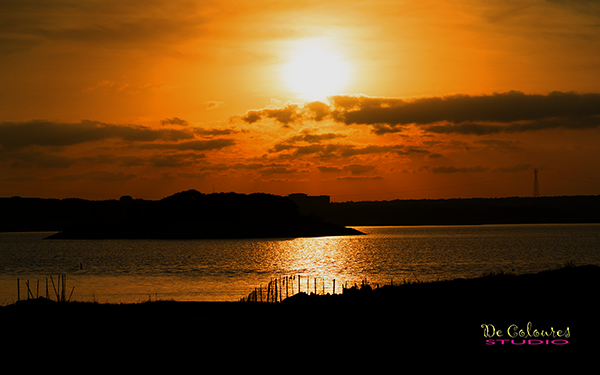 |
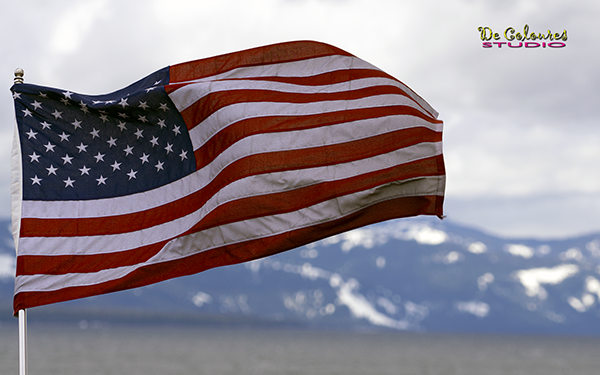 |
• — Fine-art landscape and nature photography is a type of photography that shows scenery as its most natural and realistic, with no visual manipulation or artifice. Much of nature photography is made for scientific, travel and cultural publications, but many times, they are considered the finest examples of fine art photography, where aesthetics become a picture's main value. Landscapes are macro, nature tends to be micro. Nature may also include wildlife or, at least, animate if not sentient creatures. Landscapes seldom feature living creatures, other than vegetation. For the sharpest landscapes, shoot at f/16 or even f/22. A high f-stop allows the photographer to capture details in both the foreground and the background. Having everything in focus in your landscape shots is important. Chụp ảnh mỹ thuật phong cảnh và thiên nhiên là thể loại nhiếp ảnh thể hiện phong cảnh chân thực và tự nhiên nhất, không có thao tác tạo hình hay kỹ xảo. Phần lớn nhiếp ảnh thiên nhiên được thực hiện cho các ấn phẩm khoa học, du lịch và văn hóa, nhưng nhiều khi, ví dụ tốt nhất là ảnh được dùng làm mẫu cho nhiếp ảnh nghệ thuật, nơi tính thẩm mỹ (cái đẹp) trở thành giá trị chính của bức ảnh. Phong cảnh thuộc về vĩ mô (quy mô), thiên nhiên thuộc về vi mô (thấp nhất trong hệ thống). Thiên nhiên cũng có thể bao gồm động vật hoang dã hoặc, ít nhất, sinh động (đầy sự sống với nhiều vẻ, nhiều dáng khác nhau) nếu không phải là các sinh vật có tri giác. Phong cảnh hiếm khi có các sinh vật sống, ngoài thực vật, cây cối nói chung. Để có những bức ảnh phong cảnh sắc nét nhất, hãy chụp ở f/16 hoặc thậm chí là f/22. F-chặn cao cho phép nhiếp ảnh gia chụp được các chi tiết ở cả tiền cảnh và hậu cảnh. Trong ảnh phong cảnh của bạn chụp tất cả rõ nét (đường tạo rõ nên hình dáng, làm nổi bật) là điều quan trọng bậc nhất.
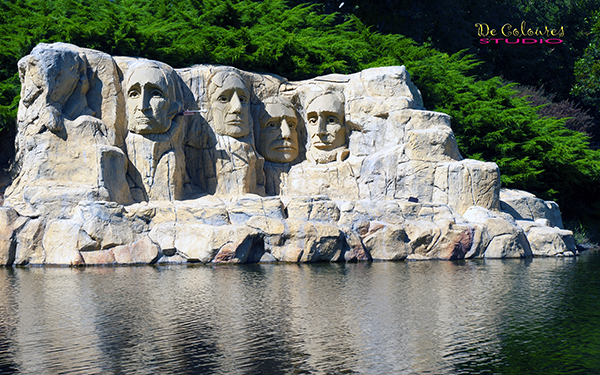 |
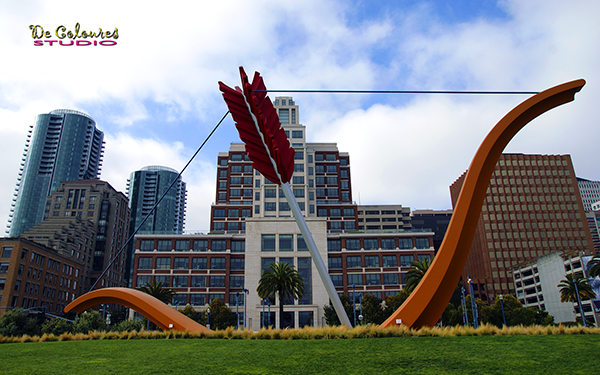 |
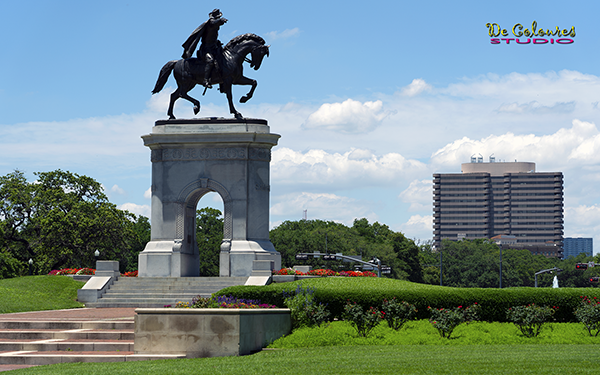 |
Urban Landscape Phtography: Look for scenes with people, but place them in their environment. The goal is to shoot where the people are and what is happening. Shoot from up above whenever possible, hotel room balconies or observation decks often offer great views. Shoot some long exposures with busy streets, skylines or a signle building at night with a high quality neutral density filter. ND filter will block out the light so you can use shutter speeds between 30 seconds and several minutes, which is enough time to create beautiful blurry clouds, remove people and cars from streets, etc.
Recommended Settings for Landscape Photography: Shoot RAW, set to 14-bit lossless compressed – Turn off lens corrections – Turn off Dynamic Range Optimizer – Turn off high ISO noise reduction – Turn off auto ISO – Use manual or aperture-priority mode so that your camera doesn’t adjust the aperture automatically – Set the aperture to balance depth of field and diffraction – typically, at a full-frame equivalent of f/8 to f/16 but a larger aperture for nighttime photography – Set the shutter speed to get a properly exposed photo – If the chosen shutter speed introduces too much motion blur, raise the ISO in order to use a faster shutter speed – Set photo contrast to the lowest possible – Use long exposure noise reduction for camera to capture long exposure photos – Use Autofocus in good condition with AF-ON and select focus point (see Sony A9 Focus Setting Guide) – Use single-servo autofocus in live view for nonmoving scenes (landscape photography). Use continuous-servo autofocus for moving subjects – Use manual focus if autofocus is not able to get a sharp result.
• — Fine-art portrait photography. A fine art portrait image is created by the photographer as an artist and not just by the camera. The photographer's vision is central to the resulting shot. A fine art portrait photograph is intended for wall art. Fine art photography is not an ordinary photoshoot or photojournalism. It is an artistic photo genre. The artist doesn’t capture the moment but creates the picture. Vision is a starting point, creating the images using the imagination. They can be fantastic, graceful, elegant, wistful, emotional, splashy, intensely, darkened, mystifying and hued. Use solid color backgrounds to highlight the subjects. A black backdrop helps to produce an illusion of depth focusing the attention on the subject. Chụp ảnh mỹ thuật chân dung. Một bức ảnh mỹ thuật chân dung được tạo ra bởi nhiếp ảnh gia như từ một hoạ sĩ chứ không chỉ bởi máy ảnh. Thị lực tưởng tượng của nhiếp ảnh gia chính là kết quả của ảnh. Ảnh chân dung mỹ thuật chỉ thường dành cho trang trí trên tường. Nhiếp ảnh mỹ thuật không phải là ảnh thường chụp hay ảnh phóng viên tường trình. Đây là một thể loại ảnh nghệ thuật. Nhiếp ảnh gia không nắm bắt khoảnh khắc mà tạo ra bức tranh. Khả năng mơ thấy là điểm khởi đầu, hình ảnh được tạo ra bằng trí tưởng tượng. Cảnh mộng có thể tuyệt vời, duyên dáng, thanh lịch, đăm chiêu, giàu cảm xúc, linh hoạt, mãnh liệt, đen tối, bí ẩn và đang bị săn đuổi. Nền đồng màu (chỉ có một màu) được sử dụng để làm nổi bật các đối tượng/đề tài. Phông nền đen giúp tạo ra ảo ảnh về chiều sâu làm đối tượng nổi bật hẳn lên.
 |
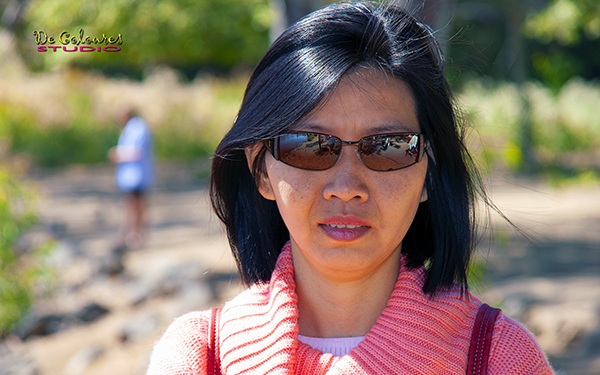 |
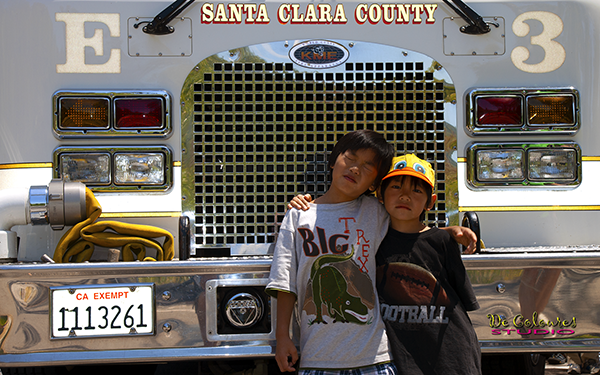 |
• — Fine-art still life photography is a type of photography, more akin to a painting than to what most people think of as taking a photograph. Still life photography is a genre of photography used for the depiction of inanimate subject matter, typically a small group of objects. Still life includes all kinds of man-made or natural objects, cut flowers, fruit, vegetables, fish, game, food and wine and so on. The art of still life photography is often in the choice of objects that are being arranged and the lighting rather than the skill of the photographer. The goal of a still life composition is to direct the viewer's eye through a painting and lead them toward what the artist thinks is important.Nghệ thuật chụp ảnh tĩnh vật là một loại hình nhiếp ảnh, giống như một bức tranh hơn mà hầu hết mọi người cho là hình chụp. Ảnh tĩnh vật là một thể loại nhiếp ảnh được sử dụng để mô tả các chủ thể vô tri vô giác, thường là tạo nên sự hoà hợp màu sắc các đề tài/đối tượng. Ảnh tĩnh vật bao gồm tất cả các loại vật thể nhân tạo hoặc tự nhiên, cành hoa cắt, trái cây, rau củ, cá, trò chơi, đồ ăn và rượu, v.v. Nghệ thuật chụp ảnh tĩnh vật thường nằm ở việc lựa chọn và sắp xếp các đối tượng với ánh sáng hơn là kỹ năng của người chụp. Mục tiêu của nghệ thuật sáng tác tĩnh vật là nhắm vào mắt người xem qua bức tranh và dẫn họ đến những gì mà nhiếp ảnh gia cho là quan trọng.
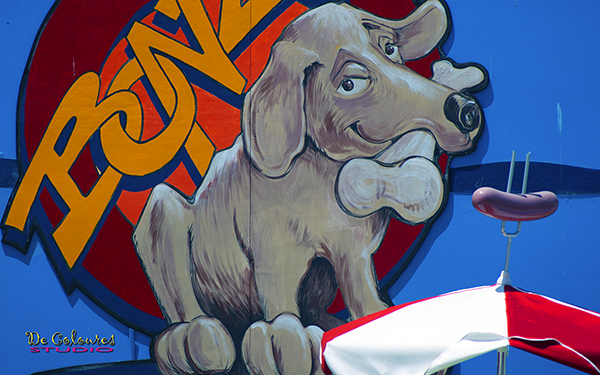 |
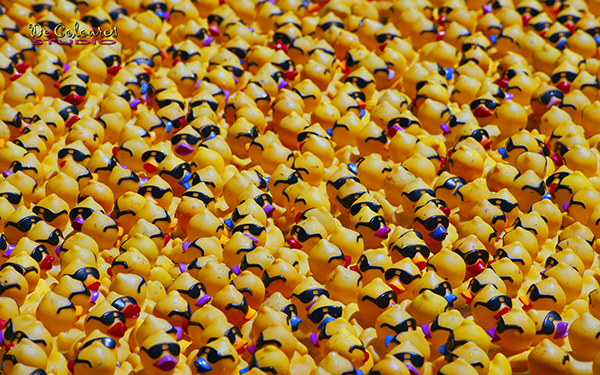 |
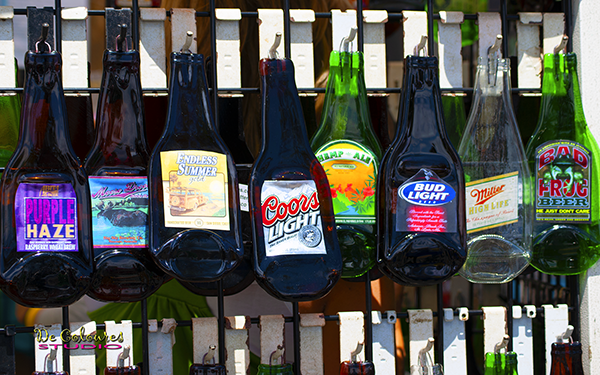 |
• — Fine-art street photography. A fine art photograph tells the story of the artist and not only the story of the subjects the photographer presents. Fine art street photography combines elements of traditional art, photography and post-production techniques, and street narratives. Street photography is often about adrenaline, capturing the decisive moment, and moving fast. Street photography doesn’t have to be city street scenes made at eye level. Street photography is defined by the communities the photographer is familiar with. This provides a diverse and interesting range of options for fine art street photography. Nhiếp ảnh mỹ thuật đường phố. Một bức ảnh nghệ thuật kể chuyện của người nghệ sĩ không chỉ là câu chuyện của các đối tượng mà nhiếp ảnh gia thể hiện. Nhiếp ảnh mỹ thuật đường phố kết hợp các yếu tố của nghệ thuật truyền thống, kỹ thuật nhiếp ảnh và hậu kỳ (đặt, bố trí, giai đoạn cuối của một tác phẩm) và những bài tường thuật về đường phố. Nhiếp ảnh đường phố thường lôi cuốn và hồi hộp, ghi lại khoảnh khắc hết sức quan trọng và thường xảy ra trong chớp mắt. Chụp ảnh đường phố không nhất thiết phải là những cảnh đường phố trong thành phố được thực hiện trong tầm mắt (độ từ mắt trông ra đến cảnh vật còn được trông thấy rõ). Nhiếp ảnh đường phố được định nghĩa ở những điểm giống nhau về một phương diện nào đó mà nhiếp ảnh gia thường trông thấy; quen thuộc. Điều này chu cấp những lựa chọn đa dạng và thú vị để chụp ảnh mỹ thuật đường phố.
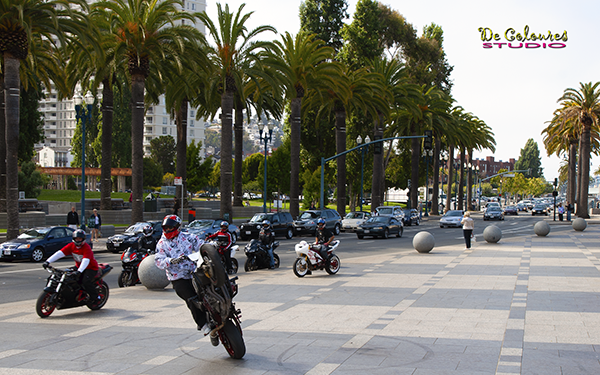 |
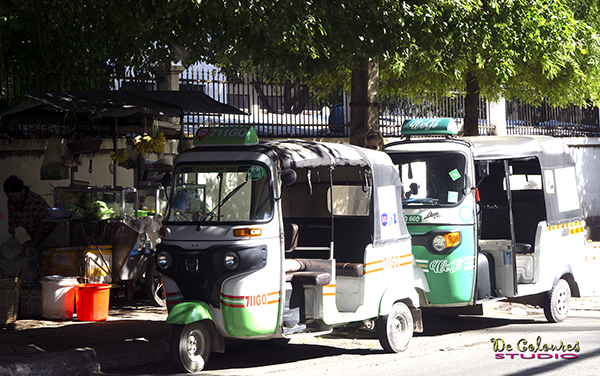 |
 |
BEST PHOTOGRAPHY WEBSITES
These best photography sites will help photographer develop skills behind the lens, boost your camera know-how and offer photographic inspiration.
British Journal of Photography is a magazine about photography, publishing in-depth articles, profiles of photographers, analyses, and technological reviews. Magazines - Awards - E-guides and Creative Services.
Camera Jabbers. For Photographers by Photographers. Content includes Reviews - Photography Tips - Photography News - Buyer Guides - Camera Accessories and Brands.
Cambridge in Colour. A Learning Community for Photographer provides Interactive Learning - Books - Tools - Tutorials - Photo Essentials - Photo Competition - Shares - Discussion & Forums.
Defense Visual Information Distribution Service is a website where you tell the story, we tell the world. Featuring Images - Video - News - Audio - Graphics - Publications - Podcasts - Webcasts - Storiestellers - Media Awards - Hometown Heros and much more.
Digital Camera World. The Home of Digital Photography provides Camera News - Photography Tips - Buying Guides - Tutorials - Forums - The Photography Show and Magazines.
NỘI DUNG TÀI TRỢ
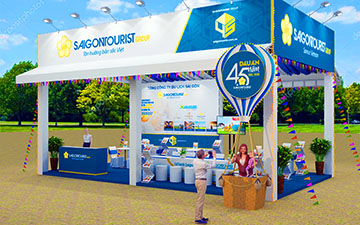
Quảng Cáo Dịch Vụ
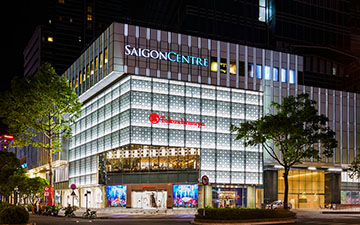
Quảng Cáo Sự Kiện

Quảng Cáo Khuyến Mãi
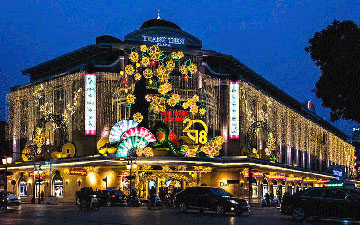
Biểu Trưng & Nhãn hiệu
Hỗ trợ chúng tôi và phát triển doanh nghiệp của bạn với chúng tôi. Mục tiêu của tôi là cung cấp thông tin kỹ thuật với khả năng truy cập sẵn sàng vào các tài nguyên, công thức và tài liệu tham khảo thường cần thiết trong khi thực hiện công việc của mình với tư cách là Kỹ sư hỗ trợ kỹ thuật. Các doanh nghiệp được liệt kê trong Nội dung được Tài trợ đã được lựa chọn cẩn thận vì tính độc đáo của chúng. Tuy nhiên, các quảng cáo liệt kê không được tài trợ sẽ được luân chuyển thay đổi hàng tháng.
ViBa Direct thiếu một ban cố vấn để thực hiện nghiên cứu và thuê các nhà văn với kiến thức kỹ thuật hiện đại. Việc tạo ra một ban cố vấn hiệu quả đòi hỏi nhiều hơn là một lời mời. Nếu không có sự tài trợ của bạn, điều này khó có thể thực hiện. Nếu công ty của bạn có nhu cầu quảng cáo, đặt biểu trưng, thương hiệu, biểu ngữ mời tham gia thảnh viên, hội viên cũng như các bích chương quảng cáo ở đây hoặc trên bất kỳ trang nào khác, xin vui lòng liên hệ Dịch Vụ Khách Hàng Dịch Vụ Khách Hàng để biết thêm chi tiết.
Digital Photo Magazine is a magazine about photography. How to Shooting - Processing - Quick Fix - Toolbox - Tips of the Weeks - Editor's Choice - Contest - Blog - Galleries - Cameras - Gear and News.
Fstoppers. Photography News and Community for Creative Photographers & Videographers. Content includes Articles - Tutorials - Community - Groups - Contests with Popular Photos and Photo of the Day.
PetaPixel is a photography news site that covers photo and camera news, reviews, inspiration, and education. The leading independent publication covering the world of photography, art, and imaging technology.
Photography Life provides Articles - News - Digital Camera & Lens - Reviews - Tips and Detailed Tutorials to Photographers of All Levels. Categorieies includes Composition & Art - Essays & Inspiration - Photography Techniques and Post-Processing.
Strobist The world's most popular free resource for learning how to use off-camera flash. The world's most popular site for photographers who want how to learn to use their flashes like a pro.
The Spruce Crafts A Brief History of Photograaphy and the Camera. Photography Basic - Photography - DIY Projects - Hobbies - All About Crafts
WHAT MAKES A GOOD PICTURE?
Apart from a subject’s inherent interest, two things are fundamentally important in a picture: composition and light. Although these principles necessarily relate more to still subjects than to action pictures, they can help all aspects of your photography. Ngoài sở thích vốn có của chủ đề, về cơ bản có hai điều quan trọng trong một bức ảnh: bố cục và ánh sáng. Mặc dù những nguyên tắc này nhất thiết phải liên quan nhiều đến chủ đề bất động hơn là ảnh hành động, nhưng chúng có thể giúp ích cho tất cả các khía cạnh nhiếp ảnh của bạn.
Whenever you plan a photograph, look long and hard at the subject until you are aware of every single aspect and detail. Then analyze what you see. Decide on the strongest point of interest, the aspect of the scene that first caught your attention. How can you make this feature prominent? Which other elements support the main feature, and where should the be placed to balance or add drama to the picture as a whole. Bất cứ khi nào bạn lên kế hoạch chụp ảnh, hãy nhìn thật lâu và chăm chú vào đối tượng cho đến khi bạn nhận thức được từng khía cạnh và chi tiết. Sau đó, phân tích những gì bạn thấy. Chọn một điểm thích thú nhất, của cảnh đầu tiên khi nhìn vào khiến bạn chú ý. Làm thế nào bạn có thể làm cho cảnh này nổi bật? Những yếu tố nào khác hỗ trợ cho cảnh chính và nên đặt ở đâu để thân bằng hoặc thêm kịch tính vào tổng thể bức tranh.
Ways of seeing. When you know why you want to take a photograph, you can go on to analyze the pictorial elements in the subject and decide the best way to portray them. Khi bạn biết lý do tại sao bạn muốn chụp ảnh, bạn có thể tiếp tục phân tích các yếu tố hình ảnh trong cảnh và quyết định cách tốt nhất để miêu tả sinh động.
Choosing the best viewpoint. Changing the viewpoint is a photographer’s most important means of controlling the way the picture will look. The best way to improve your picture is to move around the subject to find the best view whenever you take a photograph. From a level camera position, most scenes consist of a fogeround, a middle distance and a background. The relative positions of objects on these planes can be altered dramatically by shifting viewpoints. Phương tiện quan trọng nhất của nhiếp ảnh gia là thay đổi góc nhìn để kiểm soát hình thức của bức ảnh. Bất cứ khi nào bạn chụp ảnh, cách tốt nhất để cải thiện bức ảnh của bạn là di chuyển xung quanh vật/cảnh để tìm ra góc nhìn hay nhất. Từ vị trí ngang bằng với máy ảnh, hầu hết các cảnh/vật đều ở ngay khoảng cách giữa, khoảng cách giữa và hậu cảnh. Vị trí có liên quan đến các cảnh/vật trên các mặt phẳng này có thể nhìn thấy thay đổi khác biệt bằng cách di chuyển điểm nhìn. Below is a scene with the Yellowstone pine trees in the foreground, the Old Faithful, Yellowstone's Famous Geyser in the middle distance and the Center behind it in the background. Simply by moving the camera to the right, the house will be placed to the left of the tree. A lower viewpoint might bring rocks in the field into the close foreground. Move back, the Center would appear smaller and perhaps bring extra foreground elements, such as an overhanging branch of a tree into the photograph.
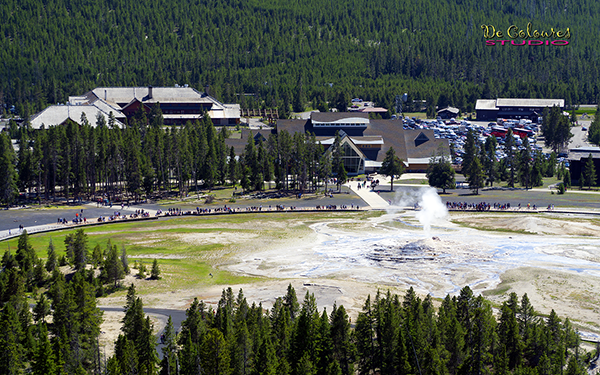 |
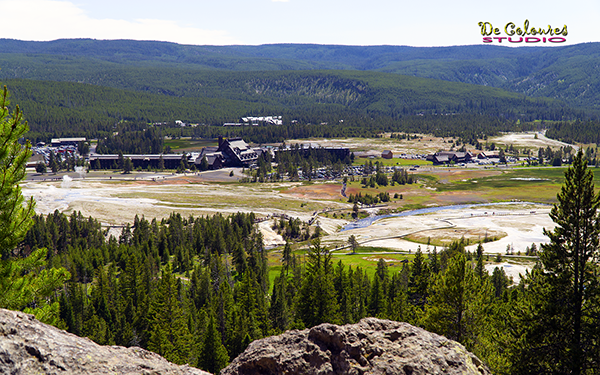 |
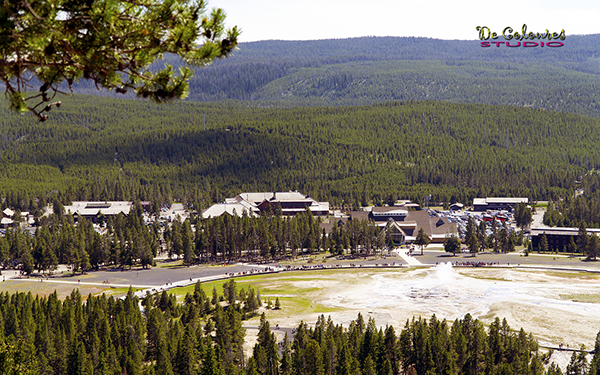 |
A-MODE and APERTURE PRIORITY
ISO. Originally, ISO numbers were set by the International Organization for Standardization (where the name ISO comes from) to refer to the sensitivity of the film in a camera to light. In digital, it’s the signal gain of the camera's sensor. Low ISO values are better in well-lit scenarios, and when less light is available, a higher ISO is needed to compensate. High ISO increases your camera’s light sensitivity, which is ideal for low-light situations.The ISO setting is one of three elements used to control exposure; the other two are f/stop and shutter speed. How ISO Affects Image Quality and Noise. Recommended ISO for Different Scenarios.

- Outdoors with sunny skies, the brightest situation: ISO 100-200.
- Outdoors with overcast, sunrise and sunset: ISO 200-400.
- Well lit interior, indoors by a window or outside on a cloudy day: ISO 400-800.
- Outdoors with overcast, sunrise and sunset: ISO 200-400.
- Semi-lit interior, indoors without flash or additional light source: ISO 800-1600.
- Night Time exterior or dimly lit interior, indoors night events: ISO 3200-6400 with a faster shutter speed like 1/320s, or 1/500s.
- Indoor or nighttime sports. Will do an experiment and let you know: ISO 6400-16,000.
In general, using higher ISO settings allows you to use faster shutter speeds to minimize the effects of handheld camera shake and subject motion, and/or smaller apertures to provide more depth of field. You can shoot in dimmer light with the same shutter speeds and apertures a slower ISO would require in brighter light.
Luminance Noise vs Chroma Noise. In digital photography, noise is the by-product of the increased electric charge needed to make the sensor more sensitive to light and looks like speckles on the image. There are two types of noise, Luminance noise (cường độ tinh khiết của ánh sáng) retains much of the original color because it only affects the brightness of the pixels. Chroma noise (cường độ tinh khiết của màu sắc) is unattractive, it looks like colored speckles or grain. This is because the noise is affecting the color of the pixels rather than just the brightness of the pixels.
APERTURE (F NUMBER): The aperture (Cửa Khẩu Độ) is a part that adjusts the amount of light coming from the lens. Adjust the amount of incoming light by changing the size of the opening. The amount of light coming to the camera affected by the size of the aperture is quantified asf-numbers. F-numbers have fixed standard values, such as F2 F2.8, F4, F5.6, F8 to F22. LARGER APERTURE –» LESS LIGHT. SMALLER APERTURE –» MORE LIGHT. As the f–number gets smaller, the aperture is opened and more light passes through the lens. For example, if the aperture is changed from F8 to F5.6, the amount of light is doubled. As a result, even if the shutter speed is doubled, it can let the same amount of light into the camera, as long as other conditions are the same.

The aperture also affects the range of in-focus area, or the amount of defocus in a photograph. LARGER APERTURE → FOREGROUND and BACKGROUND ARE MORE FOCUSSED. SMALLER APERTURE → FOREGROUND and BACKGROUND ARE DE-FOCUSSED MORE . A lens with a small f-number is generally called a "fast lens."
Aperture for Creative — Depth of Field or how much of the image is in focus. SMALLER APERTURE → FOREGROUND and BACKGROUND FALL OUT OF FOCUS. Depth of field → LARGER APERTURE → FOREGROUND and BACKGROUND WILL BEGIN TO COME INTO FOCUS. A portrait photographer may often use a wide or open aperture (f2) creatively to ensure that a background is out of focus. This brings attention to the subject rather than the background. Vice versa, a landscape photographer will often close or stop down the aperture to ensure everything is in focus, from the nearest subject to the horizon. Remember, wider focal length lenses have more depth of field, and longer (telephoto) focal lengths offer less depth of field.
• — Disfraction. Diffraction refers to various phenomena that occur when a wave encounters an obstacle or opening. It is defined as the bending of waves around the corners of an obstacle or through an aperture into the region of geometrical shadow of the obstacle/aperture. Nhiễu xạ đề cập đến các hiện tượng khác nhau xảy ra khi sóng gặp chướng ngại vật hoặc khe hở. Nó được định nghĩa là sự uốn cong của sóng xung quanh các góc của chướng ngại vật hoặc xuyên qua một khẩu độ vào vùng bóng tối trung bình của chướng ngại vật / khẩu độ. While stopping down your aperture such as f/22 or f/32 something called diffraction will cause the entire image to become slightly less sharp, even the in-focus areas. For this reason, many photographers may avoid f/22, or even f/16, depending on the camera sensor format. Indeed, f/5.6, f/8, and/or f/11 might actually be much sharper, even though they provide slightly less depth of field. This is known as a lens’ “sweet spot” but sometimes f/22 is still the best choice.
NỘI DUNG ĐƯỢC TÀI TRỢ
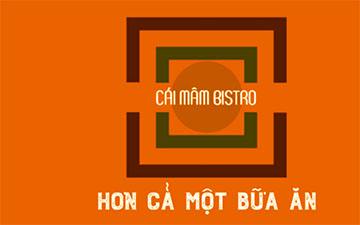
Cái Mâm Restaurant

Saigon Tourist
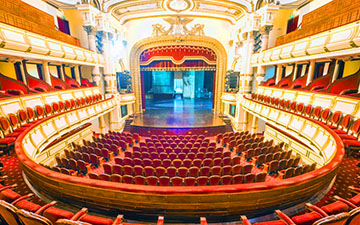
Ha Noi Opera House
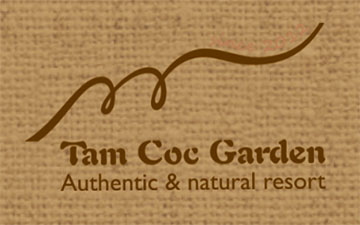
Tam Coc Garden Resort
Aperture for Creative — Flare Patterns and Sunstar Effects is used to describe any light source directly entering the lens. The look of that flare is largely a factor of the number of blades in an aperture’s design, in addition to a lens’ optical (glass) design. To increase the depth of field, a closed or small aperture opening will render incoming points of light as “starburst” patterns. The number of points on the star correlates to the number of blades in the aperture design. Wide-open aperture (f2/f2.8) will cause flare light to appear more circular and wrap around objects within the scene. Vice versa, the unique look of sunstars is achieved by a small-open aperture (f11/f16).
Aperture for Creative — Optimal Detail and Sharpness. (Độ rõ nét và chi tiết tối ưu) Aperture also affects the sharpness of an image. Lenses are inherently less sharp at their fastest, widest apertures, and stopping down the aperture will increase the sharpness of in-focus portions of the image, even in areas that were already within the existing depth of field.
As a simple rule, usually, a lens will be at or near its sharpest when stopped down 2-3 stops. For example, an f/1.4 prime lens will become extremely sharp at f/2.8 or f/4. An f/2.8 zoom lens, such as a 70-200mm, will become extremely sharp by f/5.6 or f/8. However, achieving extreme sharpness may cause diffraction and may not be the right creative choice, in some conditions. Many portrait photographers intentionally use a lens at its widest, fastest aperture, because the slight softness is actually flattering on faces and skin. For this reason, prime lens apertures such as f/1.2, f/1.4, and f/1.8 are very popular choices. Theo nguyên tắc đơn giản, thông thường, một ống kính sẽ ở mức gần bằng hoặc gần độ rõ nét nhất khi giảm xuống 2-3 điểm dừng. Ví dụ, một ống kính với f/1.4 sẽ trở nên cực kỳ sắc nét ở f/2.8 hoặc f/4. Ống kính phóng to chẳng hạn như 70-200mm với f/2.8 sẽ trở nên cực kỳ sắc nét ở f/5.6 hoặc f/8. Tuy nhiên, đạt được độ rỏ sắc nét cực cao có thể gây ra nhiễu xạ và có thể không phải là lựa chọn sáng tạo phù hợp, trong một số điều kiện. Nhiều nhiếp ảnh gia chụp chân dung cố ý sử dụng ống kính ở khẩu độ rộng nhất, nhanh nhất của nó, bởi vì độ mềm nhẹ thực sự ưu đải khuôn mặt và làn da hơn. Vì lý do này, một ống kính với các khẩu độ f/1.2, f/1.4 và f/1.8 là những lựa chọn rất phổ biến.
A-MODE. Aperture Priority Mode is a mode that allows you to set the f-number the way you want. In this mode, the camera automatically sets the shutter speed and ISO sensitivity to shoot a well-exposed photograph. This mode (set at f1.4) is suitable to defocus the foreground and background, with the focus only on the main subject, or when (set at f11) to render the entire landscape clearly by focusing on the wide range from the foreground to the background.
When to use the Aperture Priority Mode? Low lighting or to keep the subject in focus and blur out the background while taking portrait or close-up shots. Select a small aperture value such as f/1.8 or f/2.8 to achieve a shallow depth of field. Over exposure or to bring landscapes or cityscapes in focus if a greater aperture value such as f/16 or f/22 is selected, while the camera takes care of the shutter speed and ISO value.
How to Use Aperture Priority Mode → Switch to Aperture Priority Mode → Manual select an ISO or Choose Automatic ISO → Change the Aperture Value (f-Stop) → Focus on Your Subject and Take a Few Test Photos → Experiment With Different Aperture Value (f-Stop).
S-MODE and SHUTTER SPEED PRIORITY
SHUTTER SPEED. The shutter speed is the length of time that the shutter in front of the image sensor is open. While the shutter is open, the image sensor is exposed to light, from which the image is created. The fastest shutter speed → free the motion and prevent an image blur caused by the fast motion of the subject.
The longer the shutter speed is, the more light reaches the image sensor. For example, if the shutter speed is changed from 1/60 sec to 1/30 sec, the amount of light is doubled. Along with the aperture, which adjusts the amount of light coming from the lens, the shutter speed is one of the factors to determine exposure. In the auto shooting modes, P-mode, and A-mode, the camera determines the shutter speed automatically. In the S-mode, the shutter speed is manually adjusted.
Effect of the shutter speed on a photograph. Photographic expression can be controlled by changing the shutter speed.
• — Water flow: At 1/1250 sec, at this fast shutter speed the motion of water flow looks to stop. At 1/20 sec, water flow looks more dynamic and at 1/20 sec, water flow looks more silky. Moving objects can be rendered with unimaginable effect by changing the shutter speed in S-mode and M-mode.
• — Fireworks: By setting the shutter speed to 5 sec, the detail trails of fireworks can be captured. However, the slower the shutter speed gets, the more easily the image gets blurred. When shooting in low-light situations such as fireworks and night views, where the shutter speed tends to slow down automatically, it is essential to use a tripod to keep the camera steady. In a scene where a tripod is not available, use higher shutter speeds by increasing the ISO sensitivity. However, note that the higher ISO sensitivity tends to cause noise on the image. Also, to shoot night views while holding the camera in your hands, the "Hand-held Twilight" mode in Scene Selection is effective.
When to use the Shutter Speed Priority Mode? To freeze a fast moving object. A shutter speed faster than 1500th of a second is considered ideal for freezing an object, but this may vary depending on the speed of the subject. Capture movement of star trails, light trails, or blue hour photos (the time of day before sunrise and after sunset when the atmosphere has a deep, dark blue color). To allow more light into the camera for underexposed photos in dim lighting conditions if shutter speed is set from 1/200th to 1/50th. Too much light, a faster shutter speed from 1/200thh 1/1000th can minimize the amount of light entering the camera sensor. The camera will determine the required aperture and ISO values as per the available light. Khi nào sử dụng chế độ ưu tiên tốc độ màn trập? Để bắt/chụp lại một người/vật di chuyển nhanh. Tốc độ cửa trập nhanh hơn 1/500 giây được coi là lý tưởng để bắt,chụp lại một người,vật, nhưng tốc độ này có thể thay đổi tùy thuộc vào tốc độ của đề tài. Chụp các vệt Sao xẹt, vệt sáng chớp mắt hoặc ảnh giờ xanh lam (thời điểm trong ngày trước khi mặt trời mọc và sau khi mặt trời lặn khi bầu khí quyển có màu xanh đậm, sâu). Để cho ánh sáng vào máy ảnh nhiều hơn để tạo điều kiện cho các bức ảnh thiếu ánh sáng trong trường hợp ánh sáng mờ nếu tốc độ cửa trập được tăng lên từ 1/200 đến 1/50. Quá nhiều ánh sáng, với tốc độ cửa trập nhanh hơn từ 1/200thh 1/1000 có thể làm giảm lượng ánh sáng đi vào bộ phận nhạy biến của máy ảnh.
P-MODE and ISO PRIORITY
Program Mode or ISO Priority. The Semi-automatic starts by ISO setting and most likely gets you a correct exposure and that creative look of the same subject. Program mode can help amateur get good exposures. It helps beginners to understand the relationship between aperture, depth of field, shutter speed, and motion capture. Program mode can also give you a good jumping-off point to work with a mode such as Aperture Priority. Chế độ Lập trình hay Độ tinh khiết của ảnh quan trọng. Chụp ảnh Bán tự động bắt đầu bằng sự cài đặt ISO và phương pháp này rất có thể giúp bạn có được sự quan hệ chính xác giữa độ ánh sáng với vẻ đẹp sáng tạo. Đây cũng là cách mà người mới bắt đầu chơi máy ảnh hiểu được mối quan hệ giữa khẩu độ, độ rõ nét, tốc độ cửa trập và ảnh di động.
A-Mode then P-Mode → Start with P-Mode, select ISO 400 and if you like the amount of depth of field resulting from aperture f/11. You can then switch over to A-Mode, select aperture f/11 and start shooting. The camera will stay locked at f/11 while adjusting the shutter speed for various lighting conditions.
S-Mode then P-Mode → Start with P-Mode, select ISO 400 and if shutter speed 1/5th shows a nice amount of motion blurs, and you want to make subsequent photos with that amount of blur. You can then switch over to S-Mode, select shutter speed 1/5th and start shooting. The camera will stay locked at 1/5th of a second while adjusting the aperture for various exposures.
Select an ISO → Choose an Aperture → for an overcast day. → Select ISO 800, and the exposure is auto select. But if a deeper depth of field is desired, we set the aperture at f/22 (Note that when you f/Stop setting, the Shutter speed setting automatically changes to maintain proper exposure). The setting is now ISO 800, 1/20s, and f/22. A tripod is needed at this 1/20s shutter speed. Take the shot and the captured image FOREGROUND and BACKGROUND ARE MORE FOCUSSED. Change the aperture to f/4, the shutter speed automatically adjusts to 1/640th to maintain proper exposure. Take the shot and the captured image FOREGROUND and BACKGROUND FALL OUT OF FOCUS. The ISO 800 stayed locked in at 800 as aperture adjusted and shutter speed followed automatically.
Select an ISO → Choose a Shutter Speed → for a moving object. → Select ISO 800, and the exposure is auto select. But to freeze water droplets is desired, we set the shutter speed 1/1600th of a second. The setting is now ISO 800, 1/1600th at f/4. Take the shot and the captured droplets froze with the FOREGROUND and BACKGROUND FALL OUT OF FOCUS MORE FOCUSSED. Change the shutter speed to 1/50th, the aperture automatically adjusts to f/22 to maintain proper exposure. Take the shot and the frozen droplets are blurred with the FOREGROUND and BACKGROUND FALL ARE MORE FOCUSSED. The ISO 800 stayed locked in at 800 as shutter speed adjusted and aperture followed automatically.
THE WORLD FAMOUS PHOTOGRAPHERS
What makes a photo great? It's a combination of technique, artistic, creative and venture. Ask who the best well-known photographers of all time are, and we are likely to get a much more streamline set of answers. These are, and, of course, many others, are the ones that consistely appear in the world art museums.
Ansel Adam - American 1902-1984. He was a landscape photographer and environmentalist known for his black-and-white images helped to establish photography among the fine arts. Ông là một nhiếp ảnh gia phong cảnh người Mỹ và nhà bảo vệ môi trường nổi tiếng với những bức ảnh trắng đen đã giúp thiết lập nghệ thuật nhiếp ảnh.
Edward Henry Weston - American 1886-1958. He was one of the most innovative and influential American photographers and one of the masters of 20th century photography. Ông là một trong những nhiếp ảnh gia người Mỹ với sự đổi mới có ảnh hưởng nhất, và là một trong những bậc thầy của nhiếp ảnh thế kỷ 20.
Henri Cartier Bresson - French 1908-2004. He was a French humanist photographer considered a master of candid photography, and an early user of 35 mm film. Ông là một nhiếp ảnh gia theo chủ nghĩa nhân văn người Pháp được coi là bậc thầy về nhiếp ảnh chân thực, và là người sử dụng phim 35 mm của khoảng thời gian đầu.
Jacques-Henri Lartigue - French 1894-1986. He was a French photographer and painter, known for his photographs of automobile races, planes and female Parisian fashion models. Ông là một nhiếp ảnh gia và họa sĩ người Pháp, nổi tiếng với những bức ảnh về các cuộc đua ô tô, máy bay và những người mẫu thời trang nữ ở Paris.
NỘI DUNG ĐƯỢC TÀI TRỢ
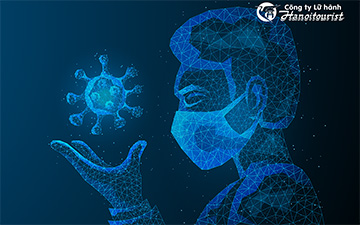
Ha Noi Tourist Company
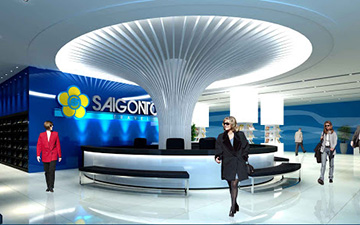
Saigon Tourist Company
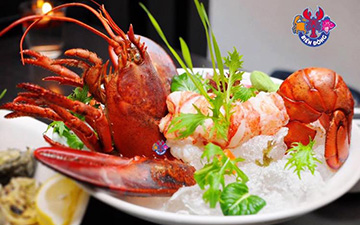
Ha Noi Seafood Restaurant
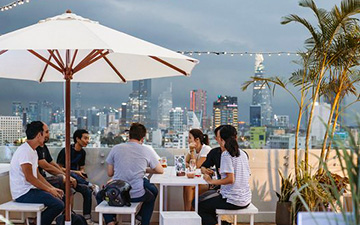
Saigon Rooftop Restaurant
Ha Noi Tourist Company. Discount Air Tickets – Lowest Price Guaranteed – CAN THO, SOC TRANG, CON DAO Tours – TOKYO, MOUNT FUJI Tours – KOREA Tours – MOSCOW, SAINT PETERSBURG Tours – Quảng cáo tại đây hoặc bất kỳ trang nào khác, vui lòng liên hệ với chúng tôi qua Tony Nguyen
Sai Gon Tourist Company. Top Destination Summer Tours 2021 – Hot Promotion —» DA NANG, DA LAT, PHU QUOC – LONG HAI Tours – TAY NINH Tours – TIEN GIANG Tours – DA LAT Tours – HO CHI MINH City Tours.
Ha Noi Seafood Restaurant. Seafood Discount 30% Off Conmbo and Hot Pot – KOREAN ABALONE – ROCK COD FISH – BLUE CRABS – CA MAU'S CRABS – ALASKAN CRABS – LOBSTERS – SQUID – OYSTERS – SAPA'S SALMON – PHU YEN'S TU HAI (MOLLUSK) SNAILS.
Best Rooftop Restaurant in Saigon. Beautiful View of Ho Chi Minh City at night – Good DJ, Music and Cocktail on Weekend Nights – EXCELLENT BAR and BURGERS – HAPPY hOUR 50% OFF From 5-7pm Weekdays.
Joseph Nicéphore Niépce - French 1765-1833. Known or referred to simply as Nicéphore Niépce, was a French inventor, usually credited as the inventor of photography and a pioneer in that field. Được biết đến hoặc gọi đơn giản là Nicéphore Niépce, là một nhà phát minh người Pháp, thường được coi là người phát minh ra nhiếp ảnh và là người tiên phong trong lĩnh vực đó.
Man Ray - American 1890-1976. He was an American visual artist who spent most of his career in Paris. He produced major works in a variety of media but considered himself a painter above all. Ông là một nghệ sĩ thị giác người Mỹ đã dành phần lớn sự nghiệp của mình ở Paris. Anh ấy đã tạo ra những tác phẩm lớn trên nhiều phương tiện truyền thông nhưng trên hết anh coi mình là một họa sĩ.
Huynh Cong Ut - Vietnamese 1951-2021. He is a Vienamese photographer who won both the 1973 Pulitzer Prize for Spot News Photography and the 1973 World Press Photo of the Year for "The Terror of War", depicting children in flight from a napalm bombing during the Vietnam War. Ông là một nhiếp ảnh gia người Việt Nam, người đã giành được cả Giải thưởng Pulitzer năm 1973 cho Nhiếp ảnh Tin tức Chính và Ảnh Báo chí Thế giới năm 1973 mô tả những đứa trẻ chạy trối chết trong một vụ ném bom napalm của Mỹ thời Chiến tranh Việt Nam.
Robert Capa - American 1913-1954. He was a Hungarian-born American war photographer and photojournalist as well as the companion and professional partner of photographer Gerda Taro. Ông là một nhiếp ảnh gia chiến tranh và phóng viên ảnh người Mỹ gốc Hungary, đồng thời là bạn đồng hành và cộng sự chuyên nghiệp của nhiếp ảnh gia Gerda Taro.
Robert Frank - American 1924. He was a Swiss photographer and documentary filmmaker, who became an American binational. He is one of the most influential photographers of the 20th century. Ông là một nhiếp ảnh gia và nhà làm phim tài liệu người Thụy Sĩ, người đã trở thành một người Mỹ. Ông là một trong những nhiếp ảnh gia có ảnh hưởng nhất thế kỷ 20.
Walker Evans - American 1903-1975. He was an American photographer and photojournalist best known for his work for the Farm Security Administration documenting the effects of the Great Depression. Ông là một nhiếp ảnh gia và phóng viên ảnh người Mỹ được biết đến nhiều nhất với công việc của mình cho Cục Quản lý An ninh Nông trại ghi lại những ảnh hưởng của cuộc Đại suy thoái.
Note: At anytime you would like to add a link to this page just email Tony with the request. It's free. If you're the website owner and you wish to have a URL removed from this page just email Customer service with the request.
WHAT MAKES A GOOD CAMERA?
The quality of a digital camera is mainly defined by four quantities: Resolution, Lens Aperture, Lens Zoom Range, Lens Quality, and Software. The resolution is the number of pixels in the captured image. Computer images are divided into little dots called pixels. The more pixels, the more detailed the image can be. A good 16x20's print required 16 megapixel and above.
Lens Aperture: The aperture of a lens is its maximum opening. The bigger the aperture, the more light is gathered, and the less light we need to take a good photo. This is the most overlooked lens specification, but it very important, especially if you like to take photos indoors without flash (look a lot more natural than flash photos) or from a reasonable distance. Lens aperture is measured in f/numbers, such as f/4 or f/22. An aperture of f/2.0 literally means that the lens opening is half the focal length of the lens. Thus, smaller numbers mean bigger lens openings. A lens that is f/2 is more expensive than a lens that is f/4.
Lens Zoom Range: A zoom lens has a variable focal length. The focal length determines the magnification of the lens. A short focal length is a wide-angle lens, great for taking photo of a large group. A long focal length is a telephoto lens, great for a tight photo of a distant object or person. If a camera has a 3X zoom, it means that the longest focal length is 3 times the shortest. Most digital cameras have a 3X zoom, with a focal length range from around 35 mm to 105 mm. 35 mm is a modest wide angle, and 105 mm is a modest telephoto. Long focal lengths present problems for photographers. It is hard to hold a camera sufficiently stable at a focal length of 300 mm. Bright sunlight helps, and a tripod or monopod can do wonders. A few cameras with extreme zooms have a stabilized lens, that compensates for camera shake. Good stabilization can make a remarkable difference in sharpness of handheld shots at extreme focal lengths.
Lens Quality: Lenses with the same focal length and aperture can differ substantially in quality. A poor lens is not as sharp, and it may exhibit chromatic aberration, which means that all colors are not brought to the same focus. This usually shows up as colored fringes at high contrast edges. Unlike aperture and zoom range, you cannot read the lens quality of the camera box. The two best approaches to getting a good lens are: Read reviews, and stick with reputable camera companies like Sony, and Canon.
SPONSORED CONTENT
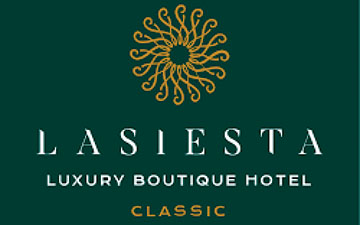
Ha Noi La Siesta Hotel
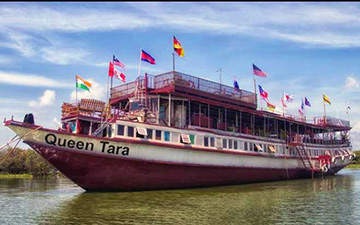
Tara River Boat
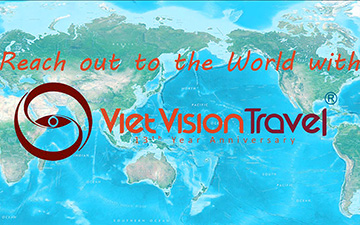
Viet Vision Travel
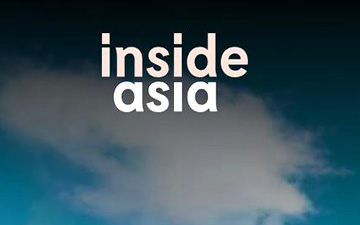
Inside Asia Tours
Which camera do I use and does it make a difference? Yes. The camera body has significant role in picture quality. The camera body plays a big part in the final image because the imaging sensor lives in the camera body. It’s what coverts the light into digital information but on the grand scale most camera bodies won’t differ in overall image quality unless you’re shooting in difficult situations such as low light. The lens will make a significant impact on the final image result. Most of us use our camera with the bare minimum of knowledge, so it can be difficult to choose which is the better camera for you. There are 4 main categories that digital cameras can be categorized as. DSLR, mirrorless, bridge, and compact. When deciding on a new camera you should consider what you will be photographing. From snapshots of family events, to professional sports photography there are so many types of cameras for so many different people. For an amateur landscaping photographer like me I choose a mirrorless full frame camera for photography and filming like the Sony A9.
DSLR: Digital Single-Len Reflex is a term that's become synonymous with digital cameras. It’s a digital single-lens reflex camera for allowing interchangeable lenses on the same camera body. A DSLR camera works by use of a reflex mirror (or prism) that reflects light into the optical viewfinder, allowing the photographer to capture the image they're seeing in front of them. The mirror moves when the shutter is released, opening up a path to the imaging sensor for the light, resulting in your photograph.
Mirrorless Camera: It is a type of camera that works without a reflex mirror. Light passes through the lens directly to the digital sensor, which then displays your image on the camera's LCD screen, allowing you to adjust settings and preview your image before its shot.
Bridge Camera: A versatile and affordable alternative to DSLRs. They offer many of the same manual controls (as well as a host of easy-to-use auto modes) plus a huge built-in zoom lens (lens is not interchangeable) that covers everything from wide-angle to super-telephoto photography. Its shared properties between a DSLR and a Compact camera.
Compact Camera: A point-and-shoot camera, also known as a compact camera and sometimes abbreviated to P&S, is a still camera designed primarily for simple operation. Most use focus free lenses or autofocus for focusing, automatic systems for setting the exposure options, and have flash units built in. A compact system camera (CSC) works using a similar principle to DSLR technology: light enters the camera body and creates an image on the sensor. However, unlike a SLR there's no mirror system to reflect light into an optical viewfinder. Instead compact system cameras use a full time live view system on the LCD.
SONY Alpha A9 Mirrorless Digital Camera: Packed with 24.2 megapixel full-frame sensor, the A9 is the camera that can shoot 20 fps continuos shooting, no blackout viewfinder, and 693-point AF system with 4K video quality. The body has built-in 5-axis image stabilization, helping keep both stills and videos steady.
EVERYTHING YOU NEED TO KNOW ABOUT FOOD PHOTOGRAPHY
FOOD PHOTOGRAPHY is a still life photography genre (loại, thể loại) used to create attractive still life photographs of food. It is a specialization of commercial photography, the products of which are used in advertisements, magazines, packaging, menus or cookbooks.
Prepare Food For Look, Not Taste: The food industry is huge and they understand the importance of great photography in selling their wares. Prepare the food to look its best, not taste its best. In photographs, food usually looks best when it is full-bodied (as it's still very hot and fresh from being cooked). The problem is that often when we take something out of the oven, it usually loses its body in the cool air to a degree. The simple trick to build the dish so it looks full-bodies (simply place other foods under the food to make it look fuller and shoot the food while it's still very hot and fresh.
Green, Red, Yellow and White in the Dish: Colour is a massive part of good food photography. In a lot of cases you can add garnishes that contrast the colour of the dish which is very effective in adding an element of colour in your photographs. A knowledge of the colour wheel and which colours contrast well and which colours complement well can serve you very well in food photography. Styling food also often relies on what is surrounding the dish as what is in the dish itself. Setting up the table and props can be a massive help (or hinderance) to getting a fantastic photograph of the food you are shooting in its own context. Here are a few things to think about.
SUPPORT US AND GROW WITH US
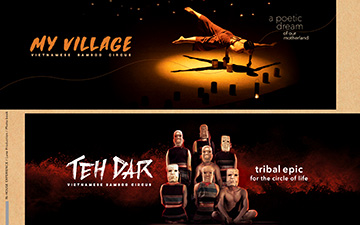
A Cultural Productions
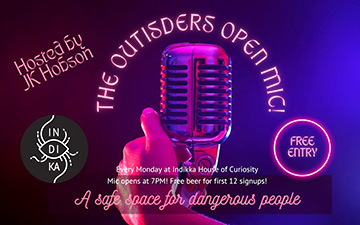
Saigon House of Curiosity
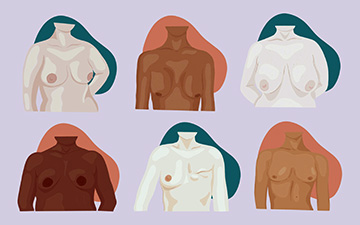
HelloGiggles
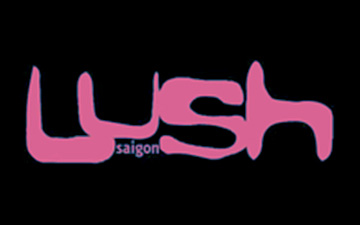
Saigon Upcoming Concerts
Support us and grow your business with us. My goal was to make technical information available with ready access to commonly needed resources, formulas, and reference materials while performing my work as a Technical Support Engineer. The businesses listed in Sponsored Content were carefully selected because of their uniqueness. However, non-sponsored selected ads will be rotated monthly.
Hỗ trợ chúng tôi và phát triển doanh nghiệp của bạn với chúng tôi. Mục tiêu của tôi là cung cấp thông tin kỹ thuật với khả năng truy cập sẵn sàng vào các tài nguyên, công thức và tài liệu tham khảo thường cần thiết trong khi thực hiện công việc của mình với tư cách là Kỹ sư hỗ trợ kỹ thuật. Các doanh nghiệp được liệt kê trong Nội dung được Tài trợ đã được lựa chọn cẩn thận vì tính độc đáo của chúng. Tuy nhiên, các quảng cáo liệt kê không được tài trợ sẽ được luân chuyển thay đổi hàng tháng.
Styling of the Scene: Styling food also often relies on what is surrounding the dish as what is in the dish itself. Setting up the table and props can be a massive help (or hinderance) to getting a fantastic photograph of the food you are shooting in its own context. The surroundings that your food appears in are almost as important as the food itself. A well designed setting can give context and mood to your shot so think about it a little. What is in the background and foreground of the food? Do you want to exclude setting altogether and get an extreme close-up of only the food? Are your dishes matched to the colour of the food? Are the surroundings set up to give a balanced composition? Elements that you would usually find in the context of a meal (condiment holders, cutlery, napkins etc) can be arranged by a stylist to help the composition. Usually you will want these elements to compliment rather than dominate the main subject – the food. It's very important to consider the colours of the dishes, cutlery, table, table-cloth etc that surround your main subject as they have such an important impact on the end result. Colours are usually very deliberately set as either contrasting or complimentary. Both can work very effectively. On the other hand, some colours just don't work with food (light green is very tough to use if you're trying to make the food dish look appetising).
Foreground, Background and Placing the Dish Properly: In food photography you should always try to get an engaging foreground and background to play with. You can even use empty spaces to tell a story if you’re into minimal photography. However, the best technique is usually to surround your main dish with ingredients and props that relate to it. This means that you can play with various ingredients, sauces, oils, and utensils. Make sure to show how the particular dish was made – this will grab your viewer’s attention! You can also arrange various tins, jars, herbs, glasses and linens around the main dish. They are very decorative and they can also speak about the origin and history of the dish.
BEST ARTIST • BOOK • MAGAZINE SITES
Amateur Photographer. 10 pages of Autum photography advice, and the world's best wildlife photographs are revealed. Explore the natural world in all its fragility and diversity, where powerful photographs tell the story of the wildlife.
Camera and Lens Reviews The Digital-Picture.com and Sony Zoom Lens Review. Sony FE 24-105mm F4 G OSS Lens Reviews. This is a great focal length range for photographing people and it is ideal for studio portraiture, weddings, parties, events, documentaries, interviews, lifestyle, fashion, some sports, candids and group and environmental portraits.
Computer Arts: Improve your freelance focus. Stay motivated and be more productive. Flyers that impress. Design matters.
Designer Kool Links. A community where DESIGNER, ARTIST, ILLUSTRATOR and PHOTOGRAPHER peers share interesting links. Whether you are a beginner or more experienced with photoshop and photography, below are some of my favorite links that will help you improve your artistic design and photography.
Digital Photo Pro: Forge your own path - A passion for food and storytelling - Revealing the rhythm of dance.
Perspective Drawing with Illustrator: Relatively specialized domain pursued by technical artists and draftsmen, it's based on orientation of the object with respect to the viewer.
Photoshop Creative: Make your own brushes, textures, fonts and more. Design your own newspaper. Drop rain into your photos.
Shutterbug Special: Expert photo techniques - Getting the right light for outdoor shoots - Why you should shoot in raw.
Tara Workman is a nature photographer, born and raised in Barbados and currently living in the Pacific North West. Workman's landscape scenes and abstracts are serene, subtle, and tranquil. Her photography covers all the seasons of the year, rain or shine.
Web Designer: The art of web fonts - 20 HTML5 APIs and tools you need to know now. Google developer secrets. 31 pages of expert tutorials.




